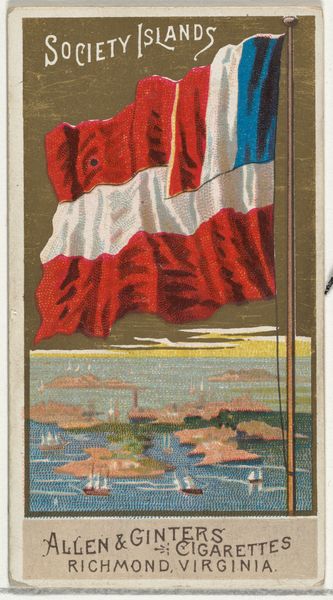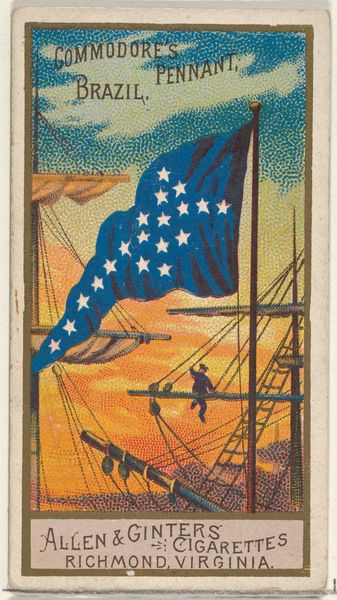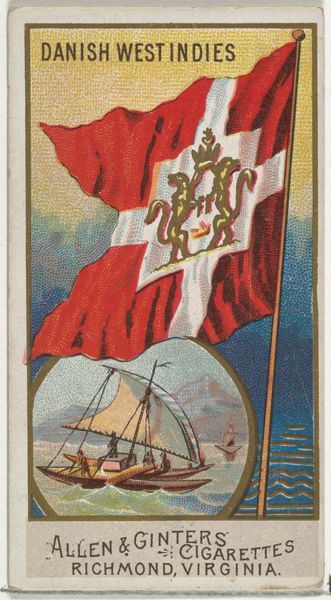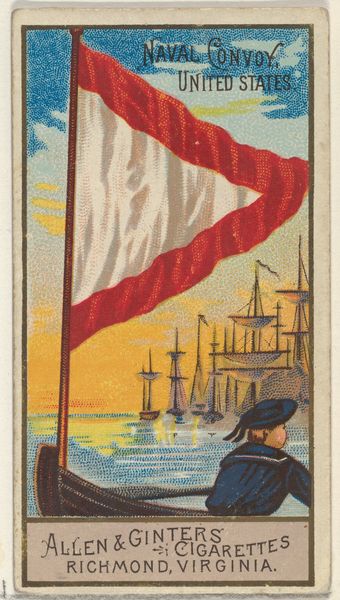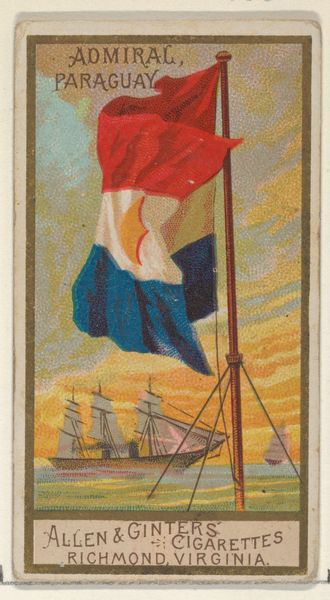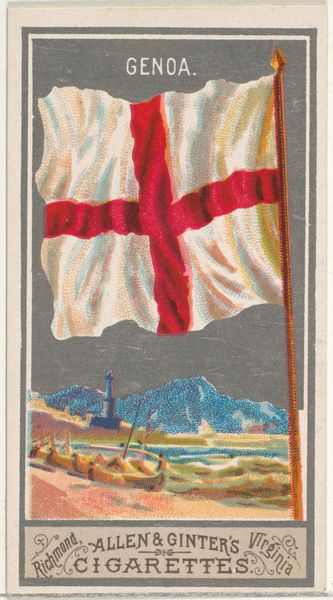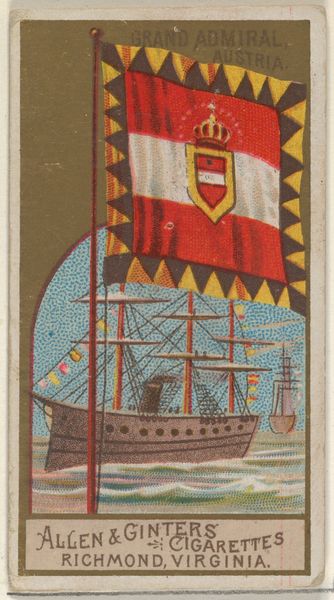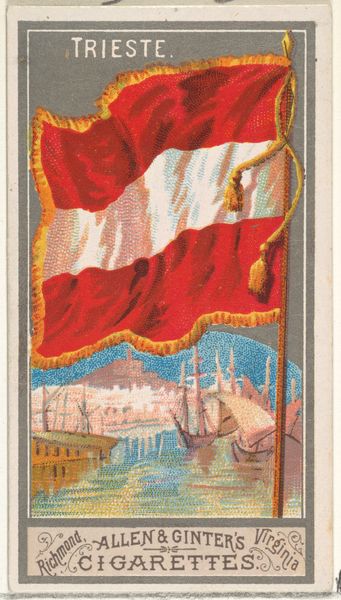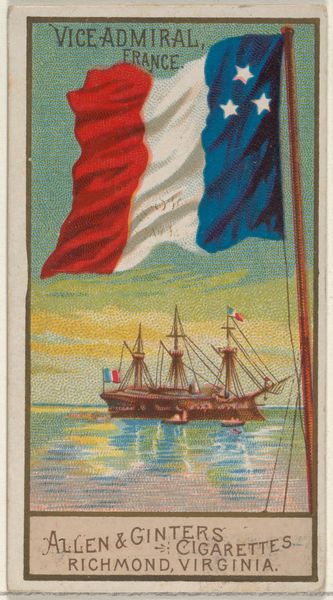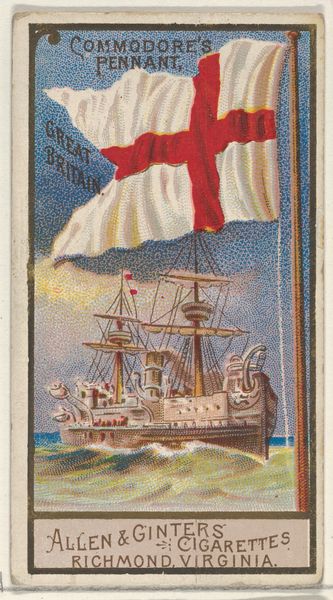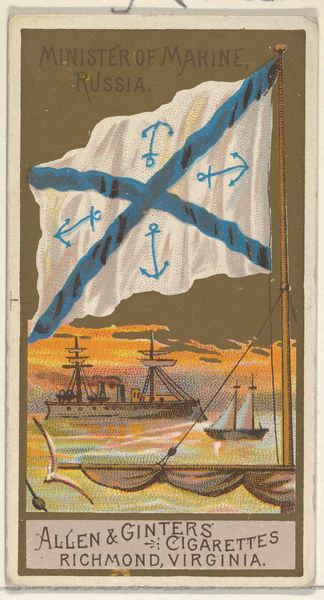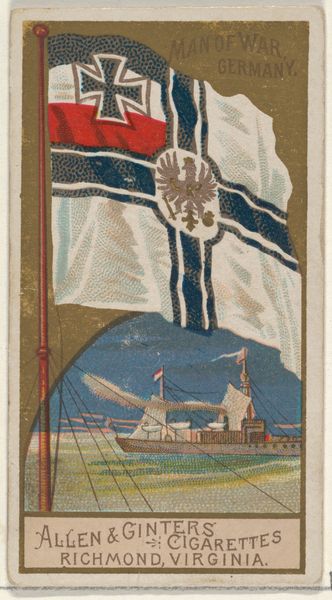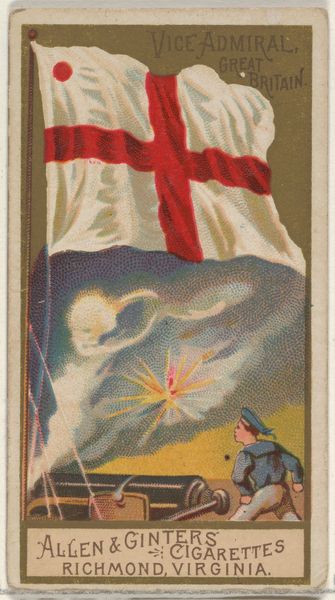
Commodore's Pennant, Austria, from the Naval Flags series (N17) for Allen & Ginter Cigarettes Brands 1886 - 1891
0:00
0:00
drawing, print, watercolor
#
drawing
# print
#
impressionism
#
watercolor
#
naive art
#
watercolour illustration
#
watercolor
Dimensions: Sheet: 2 3/4 x 1 1/2 in. (7 x 3.8 cm)
Copyright: Public Domain
Curator: This small print showcases the "Commodore's Pennant, Austria," as part of Allen & Ginter's Naval Flags series, dating back to the late 1880s. What are your initial thoughts? Editor: A peculiar feeling of both grandeur and… fragility? The Austrian flag, with its somewhat distressed red and white, flutters imposingly above the ship, but the dotted pointillist style gives the entire scene an ephemeral quality. Curator: Precisely. The composition leverages a stark contrast between the rigid geometry of the ship's rigging and the more fluid rendering of the flag and sky. Consider the structural tension—a dialectic, really—between the stability implied by the ship and the restless movement suggested by the flag. Editor: The flag as a symbol of a nation's identity rendered here in this stylized and perhaps abstracted form. Given the era, Austria was still very much a symbol of imperial power. The Commodore's Pennant itself – does its inclusion hint at a specific message about Austria's maritime authority at that time? Or the Habsburg legacy? Curator: A layered reading, indeed! Note, too, how the illustrator employs visual shorthands to signify both the flag’s texture and the atmospheric conditions, a testament to formal efficiency. But consider: does the symbolism outweigh the artistic rendering, or vice versa? Editor: It's interesting to think about how a simple illustration like this, produced for cigarette cards, carried cultural and ideological weight. The symbol of the flag, combined with this "naive art" style creates a powerful emblem of nationhood readily disseminated and consumed. It taps into a cultural reservoir. Curator: The very seriality of its production and distribution implicates a particular cultural logic— the artwork becomes almost incidental to the commercial transaction. In that regard, it prefigures some aspects of pop art’s commodification of images, no? Editor: Perhaps so. And what we discern is that the symbolic life of the Commodore's Pennant persists – refracted through the prism of aesthetics, commerce, and, ultimately, our interpretations today. Curator: Quite right. An unassuming print that manages to provoke unexpected depth. Editor: Indeed. It reminds us that symbols never truly lose their resonance.
Comments
No comments
Be the first to comment and join the conversation on the ultimate creative platform.
